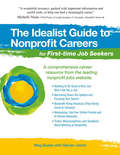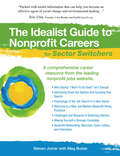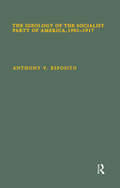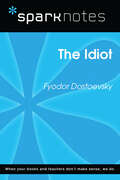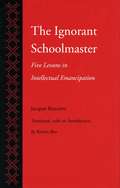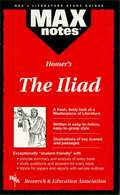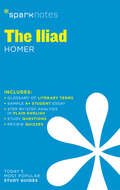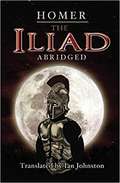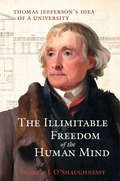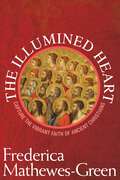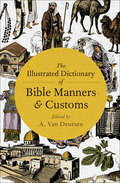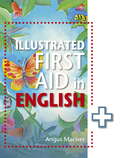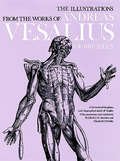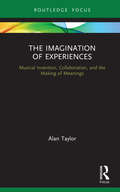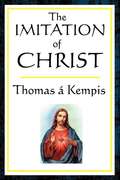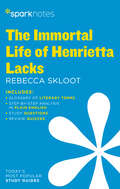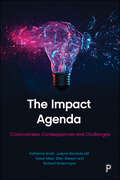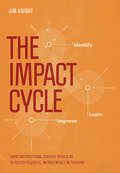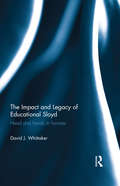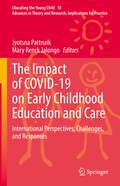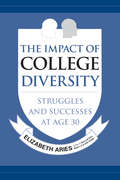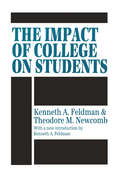- Table View
- List View
The Idealist Guide to Nonprofit Careers for First-time Job Seekers
by Steven Joiner Meg BusseInterested in exploring opportunities for meaningful work in the nonprofit sector?The Idealist Guide to Nonprofit Careers for First-time Job Seekers is a comprehensive resource for emerging professionals pursuing their first position in the nonprofit sector. Whether you are a current student, a recent graduate, or someone entering the workforce for the first time, this book will provide you with indispensable advice, relevant strategies, and nonprofit-specific resources to strengthen your job search. Written by nonprofit career experts, The Idealist Guide is designed to be easily accessible and convenient to read.Topics Include: Why Nonprofit? Mastering a Job Search Self and Career Assessment Networking Strategies Job Search Tools Evaluating Organizational Culture Interviews and First Impressions Negotiating the Best Deal Myths and Facts About Nonprofits Nonprofit Speak 101Written by the staff of Idealist.org with guest sections by other nonprofit experts.Idealist.org is the leading organization in the field of nonprofit careers. Idealist.org runs the website where people and organizations can exchange resources and ideas, locate opportunities and supporters, and take steps to turn their good intentions into action.
The Idealist Guide to Nonprofit Careers for Sector Switchers
by Steven Joiner Meg BusseThe Idealist Guide to Nonprofit Careers for Sector Switchers is the comprehensive resource for transitioning professionals pursuing new career options in the nonprofit sector.Get indispensable advice, relevant strategies, and nonprofit-specific resources to strengthen your job search. Written by nonprofit career experts, The Idealist Guide is easily accessible and convenient to read. If you are a "mid-career transitioner," a "re-careerer," an "encore careerist," a "bridger," or a "sector switcher" this book is meant for you.Topics Include: Why Nonprofit? Myths and Facts About Nonprofits Nonprofit Hiring Practices The Challenge of Sector Switching Self and Career Assessment Networking Strategies Evaluating Organizational Culture Negotiating the Best Deal Starting Your Own Nonprofit Nonprofit Speak 101Written by the staff of Idealist.org with guest sections by other nonprofit experts.Idealist.org is the leading organization in the field of nonprofit careers. Idealist.org runs the website where people and organizations can exchange resources and ideas, locate opportunities and supporters, and take steps to turn their good intentions into action.
The Ideology of the Socialist Party of America, 1901T1917 (Garland Studies in the History of American Labor)
by Anthony V. EspositoExamining the propaganda literature issued by the Socialist Party before World War I, this study investigates how the party shaped its appeal to an American audience. With the rise of an anti-monopoly reform movement after 1908 that rejected all notions of class, and socialist success in some city elections after 1910, the party confronted growing liberal strength. By 1912-13 this confrontation affected the ideological appeal and unity of the party by pitting the loyalties of class and citizenship against each other. By the time the U.S. entered WWI, the idea of class had become taboo in American politics, driving a wedge between radicals and reformers that persists until today.(Ph.D. dissertation, University of Connecticut, 1992; revised with new preface and index)
The Idiot (SparkNotes Literature Guide Series)
by SparkNotesThe Idiot (SparkNotes Literature Guide) by Fyodor Dostoevsky Making the reading experience fun! Created by Harvard students for students everywhere, SparkNotes is a new breed of study guide: smarter, better, faster. Geared to what today's students need to know, SparkNotes provides: *Chapter-by-chapter analysis *Explanations of key themes, motifs, and symbols *A review quiz and essay topicsLively and accessible, these guides are perfect for late-night studying and writing papers
The Ignorant Schoolmaster: Five Lessons In Intellectual Emancipation
by Kristin Ross Jacques RancièreThis extraordinary book can be read on several levels. Primarily, it is the story of Joseph Jacotot, an exiled French schoolteacher who discovered in 1818 an unconventional teaching method that spread panic throughout the learned community of Europe. Knowing no Flemish, Jacotot found himself able to teach in French to Flemish students who knew no French; knowledge, Jacotot concluded, was not necessary to teach, nor explication necessary to learn. The results of this unusual experiment in pedagogy led him to announce that all people were equally intelligent. From this postulate, Jacotot devised a philosophy and a method for what he called "intellectual emancipation"--a method that would allow, for instance, illiterate parents to themselves teach their children how to read. The greater part of the book is devoted to a description and analysis of Jacotot's method, its premises, and (perhaps most important) its implications for understanding both the learning process and the emancipation that results when that most subtle of hierarchies, intelligence, is overturned. The book, as Kristin Ross argues in her introduction, has profound implications for the ongoing debate about education and class in France that has raged since the student riots of 1968, and it affords Ranciere an opportunity (albeit indirectly) to attack the influential educational and sociological theories of Pierre Bourdieu (and others) that Ranciere sees as perpetuating inequality.
The Iliad (MAXNotes Literature Guides)
by Beth TanisREA's MAXnotes for Homer's The Illiad MAXnotes offer a fresh look at masterpieces of literature, presented in a lively and interesting fashion. Written by literary experts who currently teach the subject, MAXnotes will enhance your understanding and enjoyment of the work. MAXnotes are designed to stimulate independent thought about the literary work by raising various issues and thought-provoking ideas and questions. MAXnotes cover the essentials of what one should know about each work, including an overall summary, character lists, an explanation and discussion of the plot, the work's historical context, illustrations to convey the mood of the work, and a biography of the author. Each chapter is individually summarized and analyzed, and has study questions and answers.
The Iliad SparkNotes Literature Guide (SparkNotes Literature Guide Series #35)
by SparkNotesThe Iliad SparkNotes Literature Guide by Homer Making the reading experience fun! When a paper is due, and dreaded exams loom, here's the lit-crit help students need to succeed! SparkNotes Literature Guides make studying smarter, better, and faster. They provide chapter-by-chapter analysis; explanations of key themes, motifs, and symbols; a review quiz; and essay topics. Lively and accessible, SparkNotes is perfect for late-night studying and paper writing. Includes:An A+ Essay—an actual literary essay written about the Spark-ed book—to show students how a paper should be written.16 pages devoted to writing a literary essay including: a glossary of literary termsStep-by-step tutoring on how to write a literary essayA feature on how not to plagiarize
The Iliad: Translated By Ian Johnston
by Homer Ian JohnstonHomer's Iliad, the oldest and greatest epic poem in our culture, was composed in the eighth century BC. It became the single most important literary resource in ancient Greek culture, and has exercised a decisive influence on Western culture an influence which continues to this day. The poem tells the story of a quarrel between Achilles, the greatest of the Achaean warriors in the Greek expedition against Troy, and Agamemnon, the commander of the expedition an argument which causes Achilles to withdraw from the fighting. The battles continue without him, and the ironic unfolding of events eventually leads him to rejoin the war and to seek out the great Trojan warrior Hector for a climactic single combat. The Iliad is our most important war poem. It constantly forces us to confront what goes on in battle, how men sustain themselves amid the horrors of the killing zone, and how the activity is simultaneous intensely and brutally destructive and also, by one of the strangest of all of life's ironies, intensely creative. Ian Johnston's abridged version of Homer's great poem is based upon his acclaimed translation of the complete epic (also published by Richer Resources Publications). The abridged text is approximately one third of the original and presents a coherent narrative poem in which every line is taken from Homer's text, with occasional short summaries to keep the story coherent. This shortened version is an ideal entry into Homer's vision of the world for those who are not yet ready or do not have the time to tackle the full poem. The text is accompanied by a few explanatory footnotes, a glossary of names, and a map indicating the origin of many of the major characters.
The Illimitable Freedom of the Human Mind: Thomas Jefferson’s Idea of a University
by Andrew J. O’ShaughnessyAlready renowned as a statesman, Thomas Jefferson in his retirement from government turned his attention to the founding of an institution of higher learning. Never merely a patron, the former president oversaw every aspect of the creation of what would become the University of Virginia. Along with the Declaration of Independence and the Virginia Statute for Religious Freedom, he regarded it as one of the three greatest achievements in his life. Nonetheless, historians often treat this period as an epilogue to Jefferson’s career.In The Illimitable Freedom of the Human Mind, Andrew O’Shaughnessy offers a twin biography of Jefferson in retirement and of the University of Virginia in its earliest years. He reveals how Jefferson’s vision anticipated the modern university and profoundly influenced the development of American higher education. The University of Virginia was the most visible apex of what was a much broader educational vision that distinguishes Jefferson as one of the earliest advocates of a public education system.Just as Jefferson’s proclamation that "all men are created equal" was tainted by the ongoing institution of slavery, however, so was his university. O’Shaughnessy addresses this tragic conflict in Jefferson’s conception of the university and society, showing how Jefferson’s loftier aspirations for the university were not fully realized. Nevertheless, his remarkable vision in founding the university remains vital to any consideration of the role of education in the success of the democratic experiment.
The Illumined Heart: Capture the Vibrant Faith of Ancient Christians
by Frederica Mathewes-GreenWhy are modern Christians so indistinguishable from everyone else?How come Christians who lived in times of bloody persecution were so heroic, while we who live in safety are not?How could the first Christians fast valiantly, but we feel deprived without dessert?How did New Testament believers pray without ceasing?How could the early Christian martyrs actually forgive their torturers?What did the Christians of the first centuries know that we don't?That's what this book is about.From the author:When I look back at the process of writing The Illumined Heart, I'm amazed all over again at how God directed it. I wrote the whole thing in a week, the week before Christmas, in fact, which is so typically congested with last-minute errands, unpredicatable weather, aches and sniffles. For Orthodox Christians, it's also a week that we fast from meat and dairy, adding another ball to the juggling act. Yet somehow I started writing the book on Monday morning and completed it Sunday night, just fourteen minutes after the Christmas Eve service began. (I kept wondering where in the week I'd dawdled and lost that fourteen minutes.)It's no wonder that I look at The Illumined Heart as the one out of all of my books that felt the most God-directed. Mostly, he told me when to shut up. For a cup-runneth-over writer like me, starting a book is like moving into mid-pregnancy and putting on those stretch-front trousers for the first time; they're like a license to eat. And knowing that I have room to write on and on, whatever comes to mind, makes for abundant, wandering prose. Yet The Illumined Heart is quiet, proportional, just-enough; it's like a jewel. It's no wonder that this is a personal favorite among my own books, and the one I must urge people to read. I'm pleased by the amount of good work it's done so far, and hope that it will continue to do much more.
The Illustrated Dictionary of Bible Manners & Customs
by A. Van DeursenThis comprehensive volume provides detailed descriptions, illustrations, and context for many of the Bible&’s historical and cultural references. Bible stories are full of objects, manners, and customs that would have been easily recognized by people living in the Middle East during ancient times. Towns have their walls and gates; agriculture has its threshing instruments and carts; the tabernacle has its altars and lavers of brass. But while the terms used to describe these items were once common knowledge, they leave many modern readers wondering about their specific meanings. This volume offers a clearer understanding of the Bible through accessible information about its many historical references. Organized by subject matter, it includes chapters on everything from vegetation to coinage, matrimony, weaponry, transportation, idolatry, and holy places, among many other topics. Based on archeological research, The Illustrated Dictionary of Bible Manners & Customs helps readers attain a more vivid sense of the Bible&’s rich background and longstanding influence.
The Illustrated First Aid in English
by Angus MaciverUsed wherever the English Language is spoken or taught and now re-designed and beautifully illustrated to make it bright, appealing, attractive and motivating.This illustrated edition retains the structure and approach of the original bestseller but has been produced to ensure that all the terms and information are up to date and reflect the international readership of the book. It is invaluable in class and as a reference book, both to native English speakers and to students of English as an additional language. - Covers vocabulary, spelling, syntax, idiom and correct usage- Provides background information- Includes a wide-range of exercises to test knowledge and skillsThe New Illustrated First Aid in English is accompanied by an answer book which gives answers to all the exercises and tests.
The Illustrated First Aid in English
by Angus MaciverUsed wherever the English Language is spoken or taught and now re-designed and beautifully illustrated to make it bright, appealing, attractive and motivating.This illustrated edition retains the structure and approach of the original bestseller but has been produced to ensure that all the terms and information are up to date and reflect the international readership of the book. It is invaluable in class and as a reference book, both to native English speakers and to students of English as an additional language. - Covers vocabulary, spelling, syntax, idiom and correct usage- Provides background information- Includes a wide-range of exercises to test knowledge and skillsThe New Illustrated First Aid in English is accompanied by an answer book which gives answers to all the exercises and tests.
The Illustrations from the Works of Andreas Vesalius of Brussels
by J. B. Saunders Charles O’MalleyThe works of Andreas Vesalius (1514–1564) have long been regarded among the great treasures of the Renaissance. Published as medical books while he was teaching anatomy and dissection at the University of Padua, they include the Tabulae Sex (1538), intended as an aid to students; the magnificently illustrated De Humani Corporis Fabrica (1543), and the companion volume, the Epitome (1543). Individually, these books are milestones in the history of medicine. They also offer one of the most magnificent collections of anatomical drawings ever published. The plates were executed with such vitality and originality that they have been attributed to the most talented illustrators of the sixteenth century, not to mention Vesalius himself. Many of the drawings, in fact, were products of Titian's famous atelier. For this edition of the Vesalius illustrations, Dover has combined the best existing plates and text. The illustrations have been reproduced from the sumptuous (1934) Munich edition of Vesalius titled Icones Anatomicae. The Munich plates were struck for the most part from the original wood blocks then in the collection of the Library of the University of Munich. These priceless art objects were destroyed in the bombing of Munich during World War II. Aside from the original copies of the woodcuts (of which only a few complete sets are known), the Munich restrikes are the best representations of the Vesalian anatomical drawings, for they preserve much of the freshness and richness of the 1543 edition. The text of this Dover edition has been faithfully reproduced from an edition of Vesalius published by World Publishing Company in 1950. The editors, distinguished authorities on sixteenth-century medicine, have provided a very comprehensive history of Vesalius, his career, and excellent explanations of the legends surrounding the illustrators, artists, and publishers involved with the production of his books. No other source will provide the general reader, bibliophile, art historian, artist, or historian of science and medicine with such complete data on Vesalius and his fabulous anatomical illustrations.
The Imagination of Experiences: Musical Invention, Collaboration, and the Making of Meanings
by Alan TaylorAimed at lay, student, and academic readers alike, this book concerns the imagination and, specifically, imagination in music. It opens with a discussion of the invalidity of the idea of the creative genius and the connected view that ideas originate just in the individual mind. An alternative view of the imaginative process is then presented, that ideas spring from a subconscious dialogue activated by engagement in the world around. Ideas are therefore never just of our own making. This view is supported by evidence from many studies and corresponds with descriptions by artists of their experience of imagining. The third subject is how imaginations can be shared when musicians work with other artists, and the way the constraints imposed by trying to share subconscious imagining result in clearly distinct forms of joint working. The final chapter covers the use of the musical imagination in making meanings from music. The evidence is that music does not communicate meanings directly, and so composers or performers cannot be looked to as authorities on its meaning. Instead, music is commonly heard as analogous to human experience, and listeners who perceive such analogies may then imagine their own meanings from the music.
The Imitation of Christ
by Thomas A. KempisThis classic, second only to the Bible for religious instruction and inspiration, has brought understanding and comfort to millions for centuries. Written in a candid and conversational style, the topics include liberation from worldly inclinations, preparation and consolations of prayer, and the place of eucharistic communion in a devout life.
The Immortal Life of Henrietta Lacks SparkNotes Literature Guide (SparkNotes Literature Guide Series)
by SparkNotesCreated by Harvard students for students everywhere, SparkNotes give you just what you need to succeed in school: Complete Plot Summary and AnalysisKey Facts About the WorkAnalysis of Major CharactersThemes, Motifs, and SymbolsExplanation of Important QuotationsAuthor&’s Historical ContextSuggested Essay Topics25-Question Review QuizThe Immortal Life of Henrietta Lacks features explanations of key themes, motifs, and symbols including: humanity; immortality and legacy; scientific racism; racialized poverty; hela cells; red nail polish. It also includes detailed analysis of these important characters: Deborah Lacks; Henrietta Lacks; Rebecca Skloot; George Gey.
The Impact Agenda: Controversies, Consequences and Challenges
by Katherine Smith Justyna Bandola-GillMeasuring research impact and engagement is a much debated topic in the UK and internationally. This book is the first to provide a critical review of the research impact agenda, situating it within international efforts to improve research utilisation. Using empirical data, it discusses research impact tools and processes for key groups such as academics, research funders, ‘knowledge brokers’ and research users, and considers the challenges and consequences of incentivising and rewarding particular articulations of research impact. It draws on wide ranging qualitative data, combined with theories about the science-policy interplay and audit regimes to suggest ways to improve research impact.
The Impact Cycle: What Instructional Coaches Should Do to Foster Powerful Improvements in Teaching
by Dr Jim Knight"Jim Knight is one of the wise men of coaching. His well is deep; he draws from it the best tools from practitioners, the wisdom of experience, and research-based insights. And he never loses sight of the bigger picture: the point of all this is to have more impact in this life we're lucky enough to live." —MICHAEL BUNGAY STANIER, Author of The Coaching Habit "Coaching done well may be the most effective intervention designed for human performance. Jim Knight’s work has helped me understand the details of how effective coaching can and should be done." —DR. ATUL GAWANDE, surgeon, public health researcher, and author of The Checklist Manifesto Identify . . . Learn . . . Improve When it comes to improving practice, few professional texts can rival the impact felt by Jim Knight’s Instructional Coaching. For hundreds of thousands of educators, Jim bridged the long-standing divide between staff room and classroom offering up a much a more collaborative, respectful, and efficient PD model for achieving instructional excellence. Now, one decade of research and hundreds of in-services later, Jim takes that work a significant step further with The Impact Cycle: an all-new instructional coaching cycle to help teachers and, in turn, their students improve in clear, measurable ways. Quintessential Jim, The Impact Cycle comes loaded with every possible tool to help you reach your coaching goals, starting with a comprehensive video program, robust checklists, and a model Instructional Playbook. Quickly, you’ll learn how to Interact and dialogue with teachers as partners Guide teachers to identify emotionally compelling, measurable, and student-focused goals Set coaching goals, plan strategies, and monitor progress for optimal impact Use documentary-style video and text-based case studies as models to promote maximum teacher clarity and proactive problem solving Streamline teacher enrollment, data collection, and deep listening Jim writes, “When we grow, improve, and learn, when we strive to become a better version of ourselves, we tap into something deep in ourselves that craves that kind of growth.” Read The Impact Cycle and soon you’ll discover how you can continually refine your practice to help teachers and students realize their fullest potential. View Jim Knight’s Impact Cycle video trailer:
The Impact Cycle: What Instructional Coaches Should Do to Foster Powerful Improvements in Teaching
by Dr Jim Knight"Jim Knight is one of the wise men of coaching. His well is deep; he draws from it the best tools from practitioners, the wisdom of experience, and research-based insights. And he never loses sight of the bigger picture: the point of all this is to have more impact in this life we're lucky enough to live." —MICHAEL BUNGAY STANIER, Author of The Coaching Habit "Coaching done well may be the most effective intervention designed for human performance. Jim Knight’s work has helped me understand the details of how effective coaching can and should be done." —DR. ATUL GAWANDE, surgeon, public health researcher, and author of The Checklist Manifesto Identify . . . Learn . . . Improve When it comes to improving practice, few professional texts can rival the impact felt by Jim Knight’s Instructional Coaching. For hundreds of thousands of educators, Jim bridged the long-standing divide between staff room and classroom offering up a much a more collaborative, respectful, and efficient PD model for achieving instructional excellence. Now, one decade of research and hundreds of in-services later, Jim takes that work a significant step further with The Impact Cycle: an all-new instructional coaching cycle to help teachers and, in turn, their students improve in clear, measurable ways. Quintessential Jim, The Impact Cycle comes loaded with every possible tool to help you reach your coaching goals, starting with a comprehensive video program, robust checklists, and a model Instructional Playbook. Quickly, you’ll learn how to Interact and dialogue with teachers as partners Guide teachers to identify emotionally compelling, measurable, and student-focused goals Set coaching goals, plan strategies, and monitor progress for optimal impact Use documentary-style video and text-based case studies as models to promote maximum teacher clarity and proactive problem solving Streamline teacher enrollment, data collection, and deep listening Jim writes, “When we grow, improve, and learn, when we strive to become a better version of ourselves, we tap into something deep in ourselves that craves that kind of growth.” Read The Impact Cycle and soon you’ll discover how you can continually refine your practice to help teachers and students realize their fullest potential. View Jim Knight’s Impact Cycle video trailer:
The Impact and Legacy of Educational Sloyd: Head and hands in harness
by David J. WhittakerOriginating in Finland in eighteen-sixty-five, Educational Sloyd used handicrafts practised in schools to promote educational completeness through the interdependence of the mind and body. These radical ideas spread throughout Europe and America and had a significant impact on the early development of manual training, manual arts, industrial education and technical education. Today it is generally acknowledged that Educational Sloyd laid the foundations of modern technological education. This book traces the development of Sloyd from its conception by Uno Cygnaeus and the first Sloyd school founded by Otto Salomon, to its enthusiastic take up in Scandinavia and beyond. It examines the debates and controversy which surround the Sloyd system, and considers the transition from ‘hands-on’ craft work to concepts of technology education. Finally, the investigation reveals the lasting legacy of the ideas and practice of Sloyd education, and how it continues to influence technological education. Included in the book: - the foundations of Educational Sloyd - debates, controversy and rival factions - key case studies in Finland and Iceland - the lasting legacy of Sloyd education. This fascinating and comprehensive historical exploration will be of interest to scholars and researchers in the areas of technology education, comparative education and the history of education.
The Impact of COVID-19 on Early Childhood Education and Care: International Perspectives, Challenges, and Responses (Educating the Young Child #18)
by Mary Renck Jalongo Jyotsna PattnaikThis collection brings together a diverse group of scholars from throughout the world who have grappled with and investigated the impact of the COVID-19 crisis on the lives of young children. Profound changes have occurred in all facets of early childhood education and care (ECEC). Young children and their families, college students enrolled in teacher preparation programs, inservice teachers/caregivers, and postsecondary faculty have endured prolonged periods of quarantine, disruption, stress, and grief precipitated by the pandemic. These consequences have been even more challenging for individuals and groups who were already struggling or marginalized prior to the advent of the coronavirus. Collectively, the chapter authors draw upon findings from their research and insights gleaned from professional experiences to recommend ways of providing high-quality programs despite persistent global health threats.
The Impact of College Diversity: Struggles and Successes at Age 30
by Elizabeth AriesIn 2005, Elizabeth Aries chronicled what 58 Amherst College freshman—Black and white, affluent and lower-income—learned from racial and class diversity. Her study emphasized the value of campus diversity at elite colleges. Four years later, Aries interviewed the same students about their diversity experiences as they graduated. Now, eight years later, she re-interviews her participants to see how and to what extent race and class continue to play a role as they move into adulthood. The Impact of College Diversity details how exposure to diversity in college helped shape Black and white graduates process issues of economic and racial privilege and inequality at age 30. She investigates how college diversity experiences also facilitate the attainment of upward social mobility in lower-income students and the role that mobility played in their relationships with family and friends in their home communities. Aries further examines how interactions with peers of another race and class influenced development of citizenship skills and civic engagement, as well as Black students’ ability to cope with the challenges they faced in the professional world. Aries concludes her study with a discussion of why elite colleges have been beneficial in promoting upward mobility in lower-income students, and the importance of achieving equity and inclusion in making diversity initiatives successful.
The Impact of College Diversity: Struggles and Successes at Age 30
by Elizabeth AriesIn 2005, Elizabeth Aries chronicled what 58 Amherst College freshman—Black and white, affluent and lower-income—learned from racial and class diversity. Her study emphasized the value of campus diversity at elite colleges. Four years later, Aries interviewed the same students about their diversity experiences as they graduated. Now, eight years later, she re-interviews her participants to see how and to what extent race and class continue to play a role as they move into adulthood. The Impact of College Diversity details how exposure to diversity in college helped shape Black and white graduates process issues of economic and racial privilege and inequality at age 30. She investigates how college diversity experiences also facilitate the attainment of upward social mobility in lower-income students and the role that mobility played in their relationships with family and friends in their home communities. Aries further examines how interactions with peers of another race and class influenced development of citizenship skills and civic engagement, as well as Black students’ ability to cope with the challenges they faced in the professional world. Aries concludes her study with a discussion of why elite colleges have been beneficial in promoting upward mobility in lower-income students, and the importance of achieving equity and inclusion in making diversity initiatives successful.
The Impact of College on Students: Summary Tables (The\jossey-bass Series In Higher Education Ser.)
by Theodore M. Newcomb Kenneth A. FeldmanIn this landmark work, Kenneth Feldman and Theodore Newcomb review and synthesize the findings of more than 1,500 studies conducted over four decades on the subject. Writing in 1991, Ernest Pascarella and Patrick Terenzini maintained that The Impact of College on Students not only provided the first comprehensive conceptual map of generally uncharted terrain, but also generated a number of major hypotheses about how college influences students. They also noted that Feldman and Newcombe helped to stimulate a torrent of studies on the characteristics of collegiate institutions and how students change and benefit during and after their college years from college attendance. The Impact of College on Students is now a standard text in graduate courses as well as a standard and frequently cited reference for scholars, students, and administrators of higher education. Much of what we understand about the developmental influence of college is based on this work.
